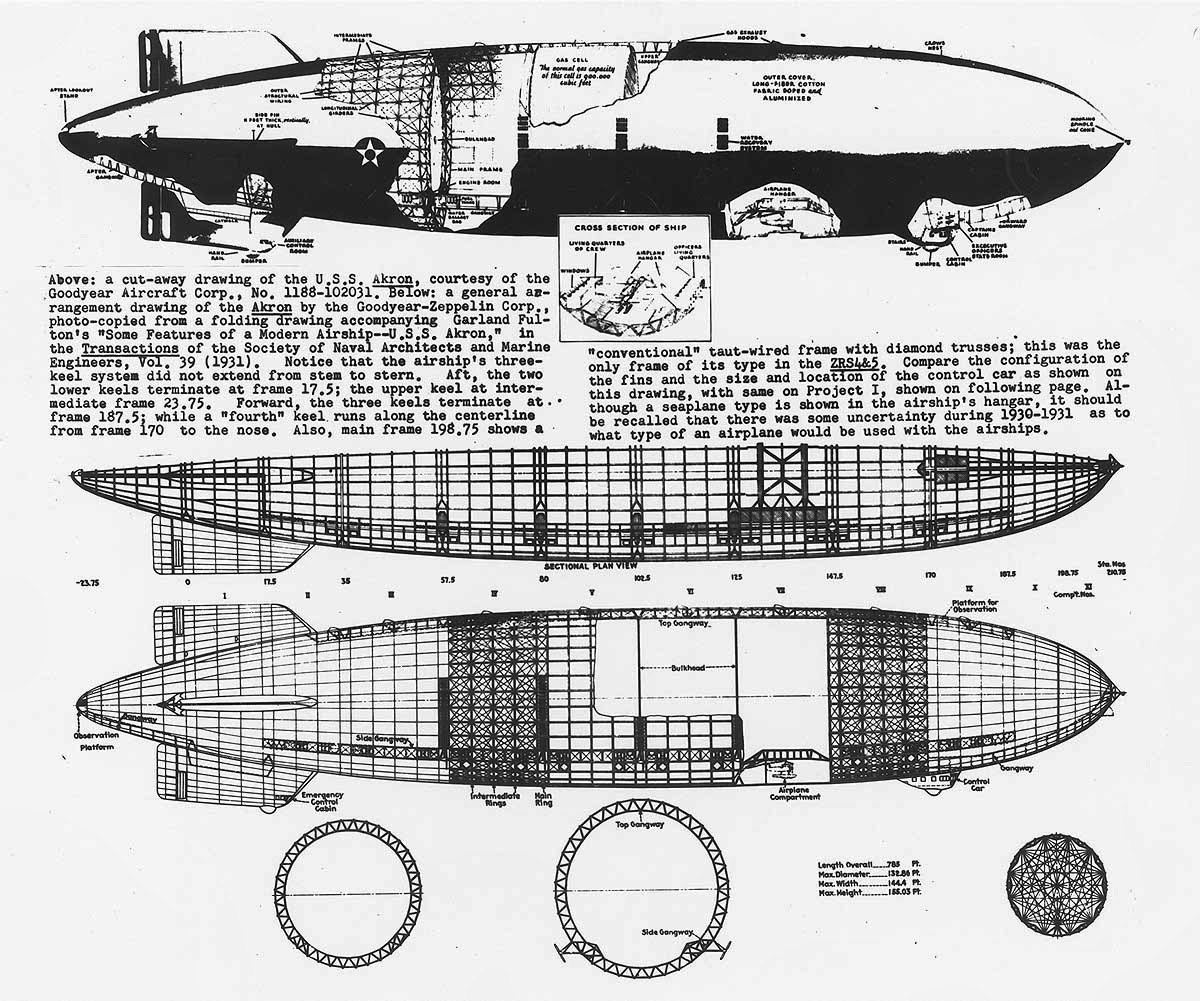Goodyear and the ZRCV Airship
The ZRS-class USS Akron and USS Macon, both fabricated by Goodyear Aircraft Co. in Akron, served as part of a massive experiment. Their purpose as proof of concept models for a skeptic Navy was masked by the vast complexity and performance of the two ships.
The ZRS designation stood for 'Lighter Than Air (The 'Z' likely being an homage to Zeppelin) Rigid Scout'. The ship's F9C Sparrowhawk fighters were designed to serve as both protective 'parasite' fighters, dispatched to eliminate threats to the larger mothership, as well as reconnaissance vehicles, their range vastly expanded by the ultra-long distance capabilities of the airship.
The next generation airship would represent a great step in naval aviation. The ZRCV designation belied their true role, CV was the navy abbreviation for Carrier Vehicle, as flying aircraft carriers.
 |
| Cross section of the USS Akron, Circa 1931 |
The next generation airship would represent a great step in naval aviation. The ZRCV designation belied their true role, CV was the navy abbreviation for Carrier Vehicle, as flying aircraft carriers.


In the days before long range radars, for the United States bordering two vast oceans, the strategic challenge of gaining an early warning of a seaborne attack, was crucial. Pearl Harbor on 7 Dec. 1941 gives ample proof to the consequences of the lack of this strategic capability.
ReplyDeleteThe Achilles heel of both the ZR-4 and -5 was the lack of a cruciform tail. This structural weakness contributed mightily to the demise of both vessels, and the demise of both vessels effectively ended the ZRS program. Had this program soldiered on, and seen the Navy constructed second generation weapons systems, it is plausible to conjecture that Pearl Harbor never would have happened.
How different, perhaps, better, perhaps not, would the history of the 20th century have been if there were no Pearl Harbor? Would the outcome of WWII have been improved? Certainly the entry of the US into the war had a dramatic impact on defeating the Axis powers. But if the US had not entered the war, would Germany have invaded the USSR? We can postulate, but we'll never know.
In any event, the presence of USN airborne aircraft carriers, deploying and retrieving reconnaissance aircraft deep in the central Pacific would have nixed Yamamoto's strike plan for the Hawaiian Islands. And for the thousands of US sailors, marines, soldiers and civilians - and their families - this would have been - indeed - a blessing.
It is so intriguing. A series of design decisions taken in the very early 1930s, in Akron Ohio as to the best means, balancing weight constraints and structural necessities, to design the tail supports for new class of rigid airship ended up - in fact - changing the course of word history to this very day.